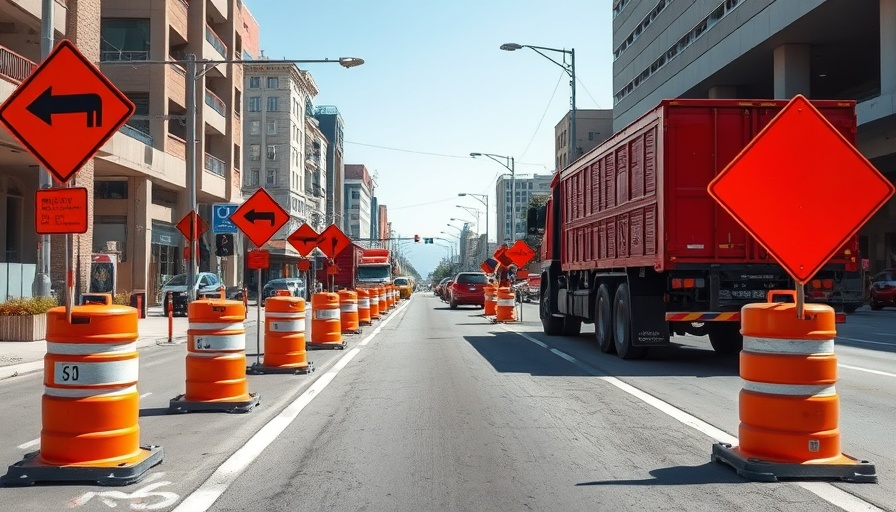
Recognizing the Fifth Fatal Risk in Construction
Balfour Beatty has taken the significant step of adding traffic as a fifth fatal risk factor in construction, extending beyond OSHA's established "Fatal Four"—falls, struck-by incidents, caught-in/between accidents, and electrocutions. This recognition comes as part of a broader commitment to enhancing safety measures within construction zones, particularly as vehicle hazards present increasing threats to both workers and civilians alike. As outlined in a recent release, this addition reflects a growing awareness of the real dangers that persist in work environments intersecting with live traffic.
The ALarming Statistics Behind Work Zone Fatalities
Statistics concerning work zone fatalities paint a sobering picture. In 2022, the National Work Zone Safety Information Clearinghouse reported 891 total fatalities within these zones, where an alarming 136 involved workers or pedestrians. This high rate of incidents is not only a wake-up call for the construction industry but also highlights the need for more aggressive safety protocols during roadway work.
The Experience of Contractors: A Paradox of Risk
A survey conducted among highway contractors revealed troubling truths about the state of work zone safety; two-thirds reported vehicle incidents within their work zones in 2024. The data suggests that the hazards posed by live traffic are frequently overlooked yet must remain at the forefront of any safety strategy. The existence of multiple collisions underscores a growing need for improvement in area awareness and vehicular control measures.
Collaborative Strategies for Enhanced Safety
Given the statistics and the experiences shared by contractors, Balfour Beatty emphasizes the necessity of mitigration strategies that involve not only construction teams but also partnerships with local law enforcement and public sector entities. Establishing proper work zone signage, employing traffic control professionals, and utilizing technology such as automated alert systems can forge a path toward safer operations within construction zones.
The Broader Implication for Businesses and Communities
For business owners, property developers, and facility managers, the implications of these high work zone fatality rates extend beyond simple liability risks; they touch upon ethical considerations regarding community safety and workforce protection. By investing in enhanced safety protocols and adopting a proactive stance on risk management, companies can not only protect their employees but also ensure the safety of the communities in which they operate.
Conclusion: Building a Safer Future
The recognition of traffic as a fifth fatal risk invites stakeholders in construction to rethink approaches to safety. By embracing innovative strategies and collaborating with local authorities, the goal of mitigating risk becomes a shared responsibility that benefits all. As we move forward in construction, the time is now to place priority on safety, not just for workers but for everyone on the road. It is imperative for executives to convey this message throughout their organizations and prioritize investments in robust safety measures that safeguard lives.
 Add Row
Add Row  Add
Add 




 Add Row
Add Row  Add
Add 

Write A Comment